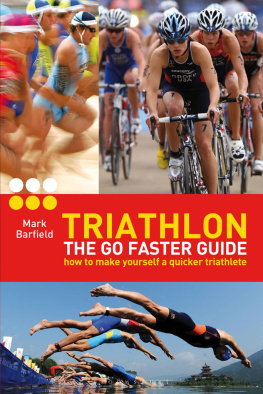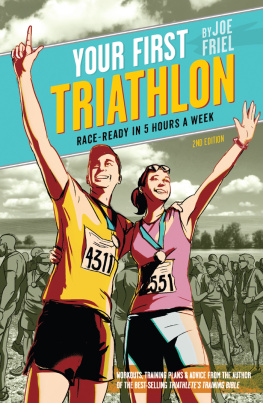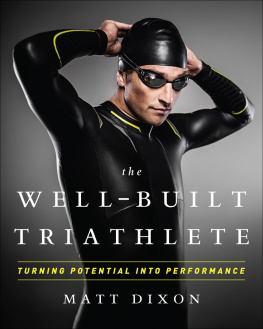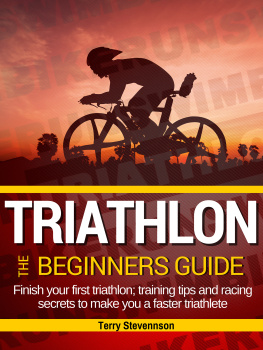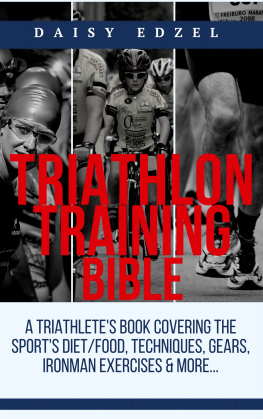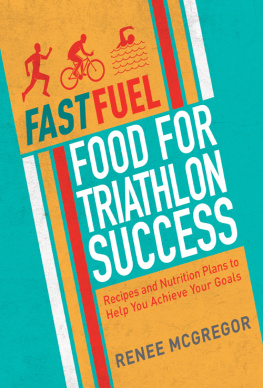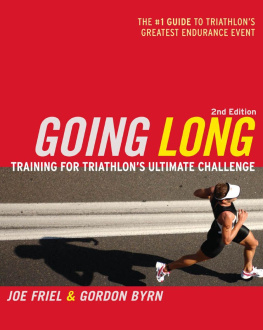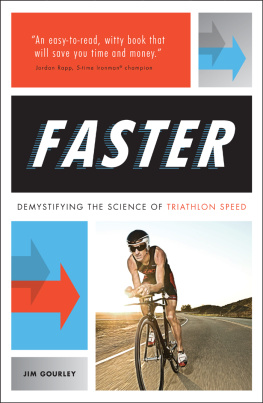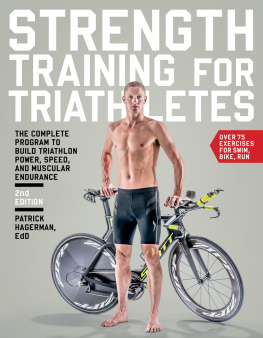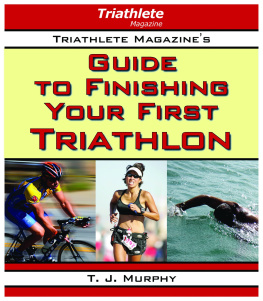



Triathlon is one of Europes fastest-growing sports. There are more events, more clubs and more opportunities to compete and improve than ever before. This book is designed to help you make the most of these opportunities, and has been written with people of all levels of experience from seasoned triathletes to complete novices in mind. This may seem like a bold claim, but with some simple structure and improved techniques you can create a plan that will help you become a faster, more effective athlete. The basics of this approach can be used for triathlon, aquathlon and duathlon and will be applicable regardless of your sporting background.
There are no magic secrets in this book, and hard work, good equipment and an appropriate diet will always be necessary, but work must be properly directed, and this book will help you to use your time wisely and achieve your best by using your efforts effectively. While it is certainly true that spending money on equipment wont necessarily make you faster, it is certainly the case that well chosen, well maintained and appropriately prepared equipment will ensure that you get the most out of your hard-earned fitness. There are already many comprehensive books on sports nutrition available; my aim is to help you get the basics right in a structure that works for you and is appropriate to your lifestyle, training and racing style.
Triathlon is a sport that offers a huge amount of enjoyment and physical reward, and this book will help you get even more from it by working hard and in the right way.
Ultimately, my approach is to help you to help yourself, as people are so diverse that one size really cant fit all. Good coaching is irreplaceable and in many cases this book will be greatly enhanced by seeking out a good coach to help you improve your technique and your tactical and technical awareness of the sport.
I will show you how to apply some structure to your training, how to apply the right kind of training load at the right time and how to plan all of this in a real working situation that is realistic and can be sustained alongside all the other responsibilities in your day-to-day life. The phrase train smart is often used but is seldom understood or properly applied, with the result that many people train too much, frequently without focus or structure. For many people one of the attractions of triathlon is that it embraces large volumes of training in diverse activities an important fix for the activity junky. You dont necessarily have to turn your back on this completely but there is a balance to be achieved with quality sessions, quality structure and adequate rest. Activity for the sake of activity is pointless and can be detrimental to your training.
I will help you construct your own programme and ask you some key questions that will help to identify if you are training hard enough and in the right way. By working through each section you will end up with plans for each of the disciplines (swimming, cycling and running). You will also have an outline of how to fuel this training and how to develop your own nutritional strategy for events. Towards the end of the book you may start to put all of this together into a cohesive and balanced plan that will focus on your target events. The book will also aid you in identifying a plan that will help you build to faster long-term goals and a better racing future.
A well-designed plan will help you get faster and achieve your goals. This book will give you the information you need to do this. At the back of the book you will find a glossary of useful terms. Terms that appear in this glossary are italicised the first time they are used in the book.
Assess current position
In order to gauge progress, set goals and break training down into manageable pieces it is essential that you know your position now and at appropriate points during the process. The way to do this is to test your parameters across all three disciplines. The book will work you through this process, and as you develop your training programme you will build in tests at appropriate points to ensure you are improving at the right pace. It is very important that you record your testing data in enough detail that the data is easy to replicate, compare and develop from. This means noting the circumstances around each test including details of work and life commitments in the surrounding days. This will help you understand and minimise the ways in which outside factors affect your results. It is essential that you are honest with yourself about your position at any given time, and you will need to establish what your weaknesses are as well as working on your strengths. People often fall into the trap of training harder in the disciplines they find easier, meaning that their strengths get stronger and their weaknesses remain just that. Achieving this level of honesty with yourself can be very difficult, but you really do need to address your weaknesses in order to become a rounded athlete. Broadly speaking if you were evenly talented across all three disciplines you would look for a programme with an even number of sessions per discipline, with additional time devoted to transition training (see ). This would not necessarily reflect the number of hours devoted to each discipline as, by their nature, you would spend more time cycling for instance than you would swimming, even if the number of sessions remained the same. If you are weaker at one discipline, you should increase the number of sessions in this discipline while reducing the number of sessions in your stronger disciplines. Technique training will have an impact as well but this will be looked at in Chapters 2, 3 and 4, which deal with the disciplines individually.
In the appendix at the end of the book are four template planning forms that will help you structure your training. You can photocopy these or download them from www.bloomsbury.com/uk/triathlon-the-go-faster-guide-9781408832271. Each is outlined below with an example plan.
Our first planning form is designed to enable you to work out what time you have to fit in training with the rest of your life commitments. This is really important to ensure you identify the opportunities that you have to train as well as ensuring that you have sufficient time for work, family, rest and other activities.
This example shows an outline of a typical week. There is plenty of free time in it but the training sessions are clearly identified. Of course, with different working life patterns your plan may not be this simple but the principle remains the same: set clearly defined training times during the day and week.

The second planner provides a long-term view of where you are headed. You can use this for number of sessions in each discipline or to record your goals.
Next page
